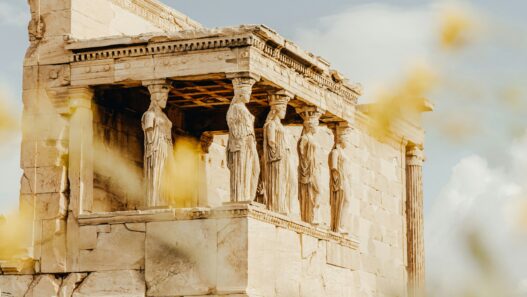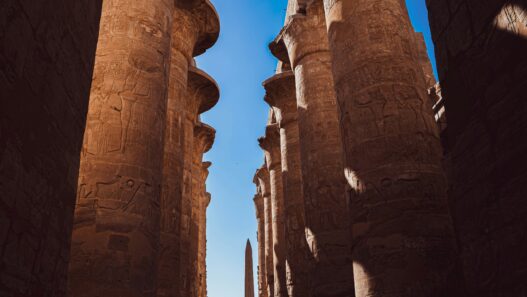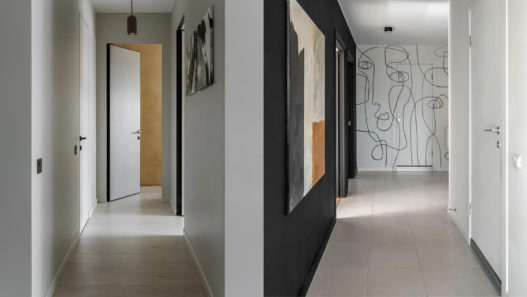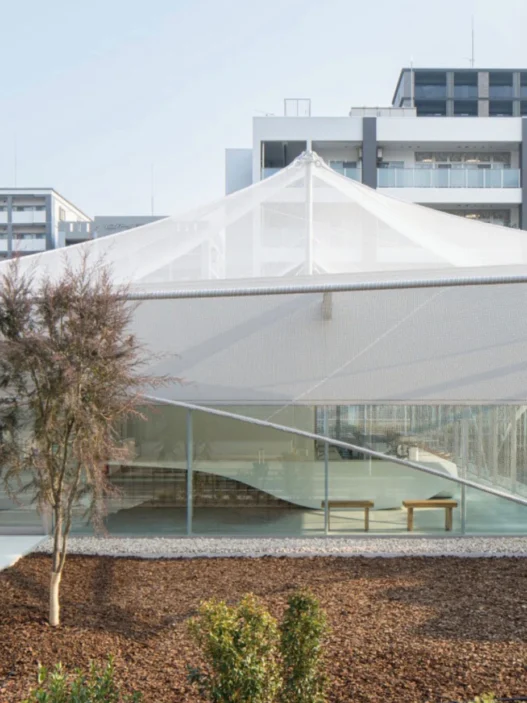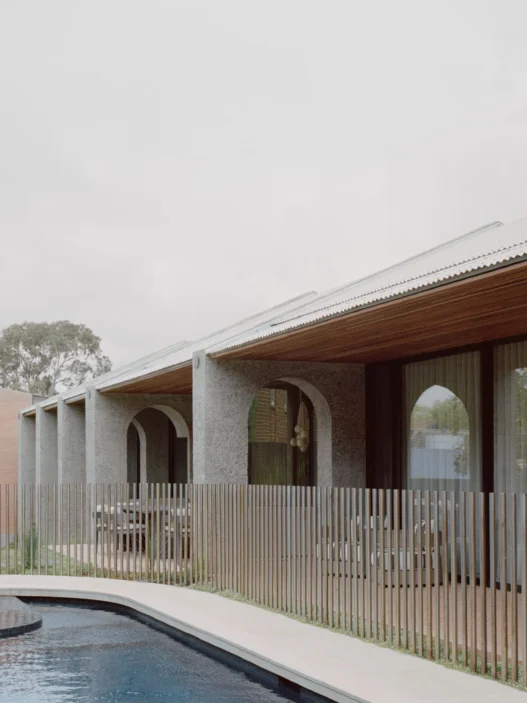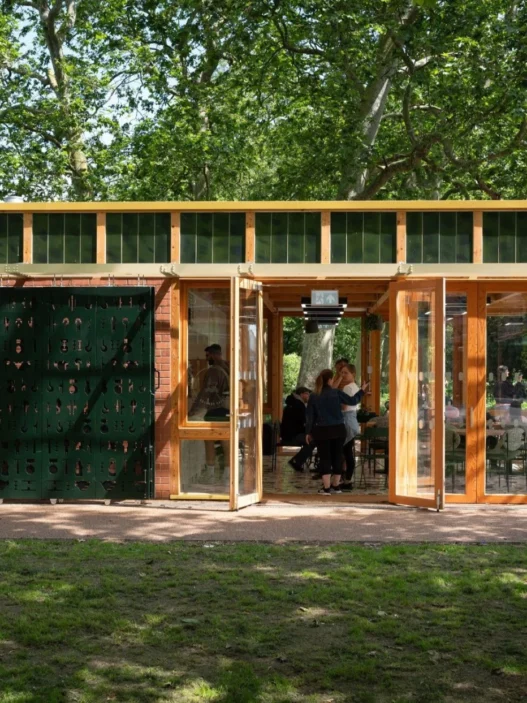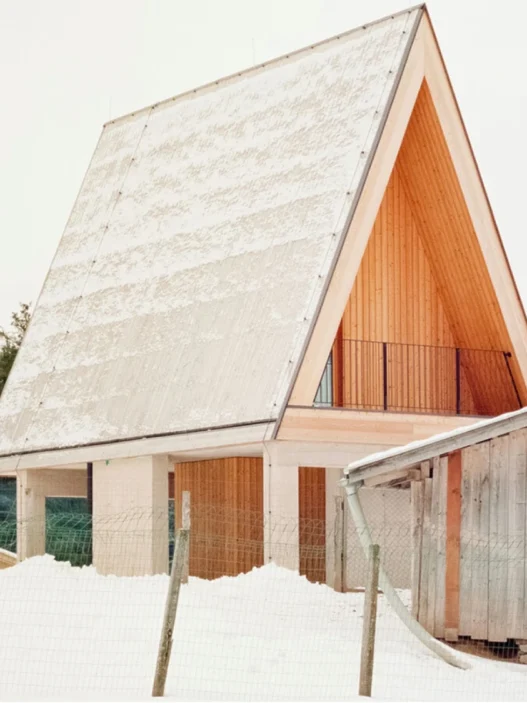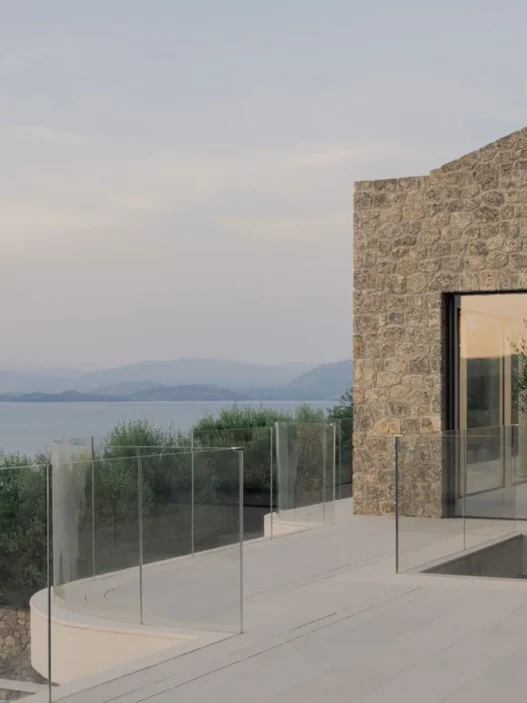The Ancient Egypt architecture is one of the most unique and famous examples of architecture in world history. It developed over thousands of years, beginning with the Old Kingdom (c. 2686-2181 BC) and continuing until the Roman period (30 BC – 395 AD).
The history of Ancient Egypt spans over three thousand years. Over such a long period, not one single architectural style developed, but a variety of styles with common components.
Characteristic features of ancient Egyptian architecture
Ancient Egypt, like modern Egypt, is located in a fairly arid region where wood is rare. Therefore, the main materials used by ancient Egyptian architects and builders were stone and mud bricks baked in the scorching Egyptian sun.
Monumental and cult buildings of the ancient Egyptians were often constructed using the post and lintel method. This is a special architectural technique in which strong horizontal elements are supported by strong vertical elements, with significant gaps between them.
Another characteristic feature of many ancient Egyptian architectural monuments is that they were built and aligned using the canons of astronomy. For example, the pyramids were aligned relative to the North Star, and the Temple of Amun-Ra is oriented toward the sunrise in winter.
The architecture of Ancient Egypt was connected with religion and the cult of worship of pharaohs and gods. It is distinguished by its monumentality, precision, and durability, which allows us to admire its magnificence and beauty to this day.
Where to look for announcements of articles and fresh ideas for the interior?
Follow our social media! We publish beautiful selections, videos and reviews:
Instagram / Facebook / X / Pinterest
Examples of Ancient Egyptian Architecture
Egyptian Pyramids
One of the most famous forms of ancient Egyptian architecture are the pyramids. They were built during the Old Kingdom and were tombs for the pharaohs. Pyramids have a square or rectangular base and are covered with smooth stone blocks.
The pyramids of Egypt are some of the most famous examples of ancient architecture. They were built between 2600 and 2500 BC and were used as burial places for pharaohs. The most famous pyramid is the Pyramid of Cheops, which is considered one of the Seven Wonders of the World. It was built from huge limestone blocks that were carefully processed and stacked on each other. The height of the Pyramid of Cheops is 147 meters, and its base covers an area of more than 5 hectares. In addition to the pyramids, Egypt also has many other ancient architectural structures, such as temples, necropolises, mosques, and houses.
Temple of Amun-Ra
Besides the pyramids, Ancient Egypt is known for its many temples, palaces, and other buildings. One of the most famous temples is the Temple of Amun-Ra at Karnak, which was begun during the Old Kingdom and continued for several centuries. The temple was built on a huge area and has many halls, pylons, and colonnades.
Mastabas
Other famous forms of ancient Egyptian architecture include mastabas, which were tombs for the upper classes, and obelisks, which were used to decorate temples and other buildings.
The architecture of Ancient Egypt has always aroused my deep interest and admiration. Its monumentality, symbolism, and technical perfection amaze the imagination. However, in addition to the widely known pyramids and temples, Egyptian architects created many other, lesser-known, but no less impressive structures. In this article, I want to share my thoughts on construction technologies, materials, and some little-known architectural monuments of Ancient Egypt.
Construction materials and technologies
Egypt’s hot and dry climate, as well as limited natural resources, significantly influenced the choice of building materials. The main ones were stone and mud brick.
Stone
The Egyptians used a variety of stone, including limestone, sandstone, granite, and basalt. Limestone was quarried in the Nile Valley and used to build the interiors of pyramids and temples. Granite, a harder, more durable material, was used for cladding and to create significant features such as obelisks and statues. It was quarried in Aswan and transported down the Nile to the construction site. Sandstone and basalt were also used in various construction projects.
Adobe Bricks
In regions where stone was difficult to obtain or expensive, adobe bricks were widely used. They were made from a mixture of clay, sand, and water, molded into rectangular blocks, and dried in the sun. Such bricks were used primarily for the construction of residential buildings, warehouses, and fortress walls. Although they were less durable, their production was cheaper and faster than stone masonry.
Construction technologies
One of the most impressive technologies developed by ancient Egyptian builders was the technique of moving and installing huge stone blocks. Without using modern mechanisms, they managed to transport multi-ton blocks over significant distances. It is believed that they used sled systems for this, which were pulled along a damp sand surface, reducing friction. To lift the blocks to a height, they used embankments of sand and gravel, along which the stones were gradually moved to the installation site.
In addition, the Egyptians were masters of the precise fitting of stone blocks. Without using mortar, they laid them with such precision that it was impossible to insert a knife blade between them. This ensured the strength and durability of the structures, many of which have survived to this day.
Lesser-known architectural monuments
In addition to the famous pyramids of Giza and the temples of Luxor, there are many other architectural monuments in Egypt that, although less known to the general public, are no less significant from a historical and cultural point of view.
The Mortuary Temple of Hatshepsut
This temple, located in Deir el-Bahari, is one of the masterpieces of ancient Egyptian architecture. It was built for Queen Hatshepsut and is distinguished by its terraced structure, which fits harmoniously into the surrounding landscape. The temple consists of three levels of terraces connected by ramps and is decorated with colonnades, statues, and reliefs telling the story of the life and achievements of the queen.
Colossi of Memnon
Two giant statues of Pharaoh Amenhotep III, known as the Colossi of Memnon, stand on the west bank of the Nile, near Luxor. Each statue is about 18 meters high. Initially, they guarded the entrance to the memorial temple of Amenhotep III, which, unfortunately, has not survived to this day. Interestingly, in ancient times, one of the statues made sounds when heated by the sun’s rays, which attracted many pilgrims and tourists.
Malkata Palace
Situated on the west bank of the Nile, near Thebes, the Malkata Palace was built by Pharaoh Amenhotep III as his main residence. The complex included living quarters, reception halls, temples and an artificial lake. Although only ruins remain of the palace, excavations allow us to imagine its former grandeur and luxury.
Temple of Seti I at Abydos
This temple, dedicated to seven deities including Osiris and Isis, is one of the best preserved temples of ancient Egypt. It is famous for its beautifully executed reliefs and inscriptions, as well as the so-called “King List” – a list of the pharaohs of Egypt, engraved on the walls of the temple.
Tuna el-Gebel
Located near the ancient city of Hermopolis, Tuna el-Gebel is a vast necropolis used for centuries. Thousands of animal mummies have been found here, including ibises and baboons dedicated to the god Thoth. The necropolis also contains burials of priests and high-ranking officials.
The Influence of Ancient Egyptian Architecture and Its Legacy
The architecture of Ancient Egypt had a huge impact on subsequent civilizations. Its principles were adopted and reworked by the Greeks, Romans, and later by the architects of the Renaissance and Classicism. Monumentality, symmetry, massive colonnades, and clarity of lines became recognizable features of Egyptian-inspired architecture. Even today, elements of the ancient Egyptian style can be found in buildings and monuments around the world.
However, the most impressive thing about Egyptian architecture is not only its grandeur, but also its durability. Despite the millennia that have passed since their construction, the pyramids, temples, and tombs remain part of the world’s cultural heritage. They continue to inspire researchers, historians, and architects, revealing to us the secrets of an ancient civilization.
A journey into the world of ancient Egyptian architecture is an opportunity to touch the past, understand the philosophy of ancient builders, and see how people thousands of years ago created works that have survived the ages. And the more deeply we study these structures, the more we admire the genius of those who created them.


